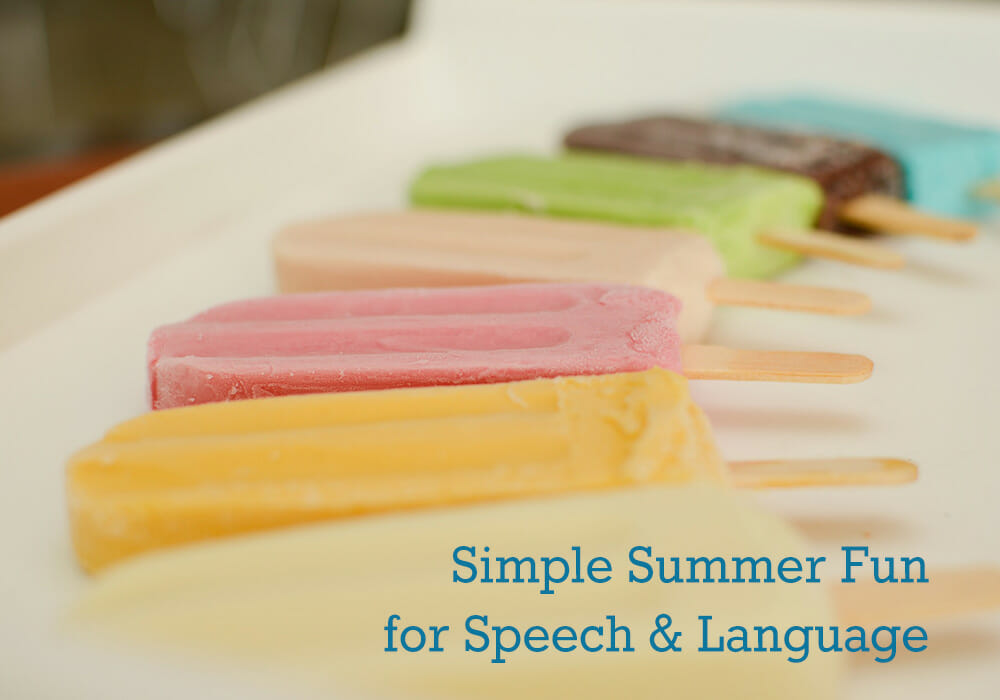With summer comes camps, vacations, and lazy days! You’ve no doubt done these things and more, but remember that summer also brings some great opportunities to work on speech and language skills. The following are some simple, fun (and maybe slightly messy) ideas to make speech and language exciting for kids.
Bubbles
Bubbles are by far one of my favorite activities with kids. Pull out the bubbles and you usually see a smile on a child’s face…even with older children. Unfortunately, sometimes we avoid bubbles because…you guessed it, a mess! Thankfully, there are some ways around the mess if you need it, such as Little Kids Fubbles No-Spill Big Bubble Bucket (affiliate link). They can be filled with bubbles and if knocked over, you don’t have bubbles everywhere. Bubbles can be used to work on speech sounds in words and language concepts such as pop, more, bubble, in, out, on, under, blow, dip, my turn, your turn, head, nose, touch, sticky, wet, see, look, where.
Water Balloons
That’s right! Grab a bucket and fill it with full water balloons! Then, you’re ready to work on turn-taking (“my turn”, “your turn”) as you pass the water balloons back and forth, describing how the water balloons look and feel (squishy, full, red, yellow) when they are full and how they feel/look when they fall (popped, mess, wet, falling).
Paper Plate Balloon Tennis
This game can be played indoors as long as you have a bit of space to move around. You will need some paper plates, a craft or popsicle stick (one per person), some strong tape, and a balloon. Tape each craft stick to the bottom of each plate, so that it sticks out and makes a handle. Now, you have a paddle! Hit the balloon back and forth between people using your paper plate paddle.
Work on turn-taking, following directions (e.g., tap the balloon up high, tap the balloon over my head), describing who you are tapping the balloon to or where you are tapping it (e.g., over the chair, in the box, on the couch).
Popsicles from a Recipe
Following a recipe is great practice for turn-taking (again) as each person adds an ingredient, following directions (the steps of the recipe), time management (how long does a recipe take to make from start to finish), describing (how do the ingredients look/feel/taste: sticky, wet, dry, heavy, liquid, rough, sweet, sour, salty). Allrecipes.com has some great recipes to try, or use your own!
Sarah Gonzales, M.A., CCC-SLP
Image Courtesy Pixabay/Title Added








